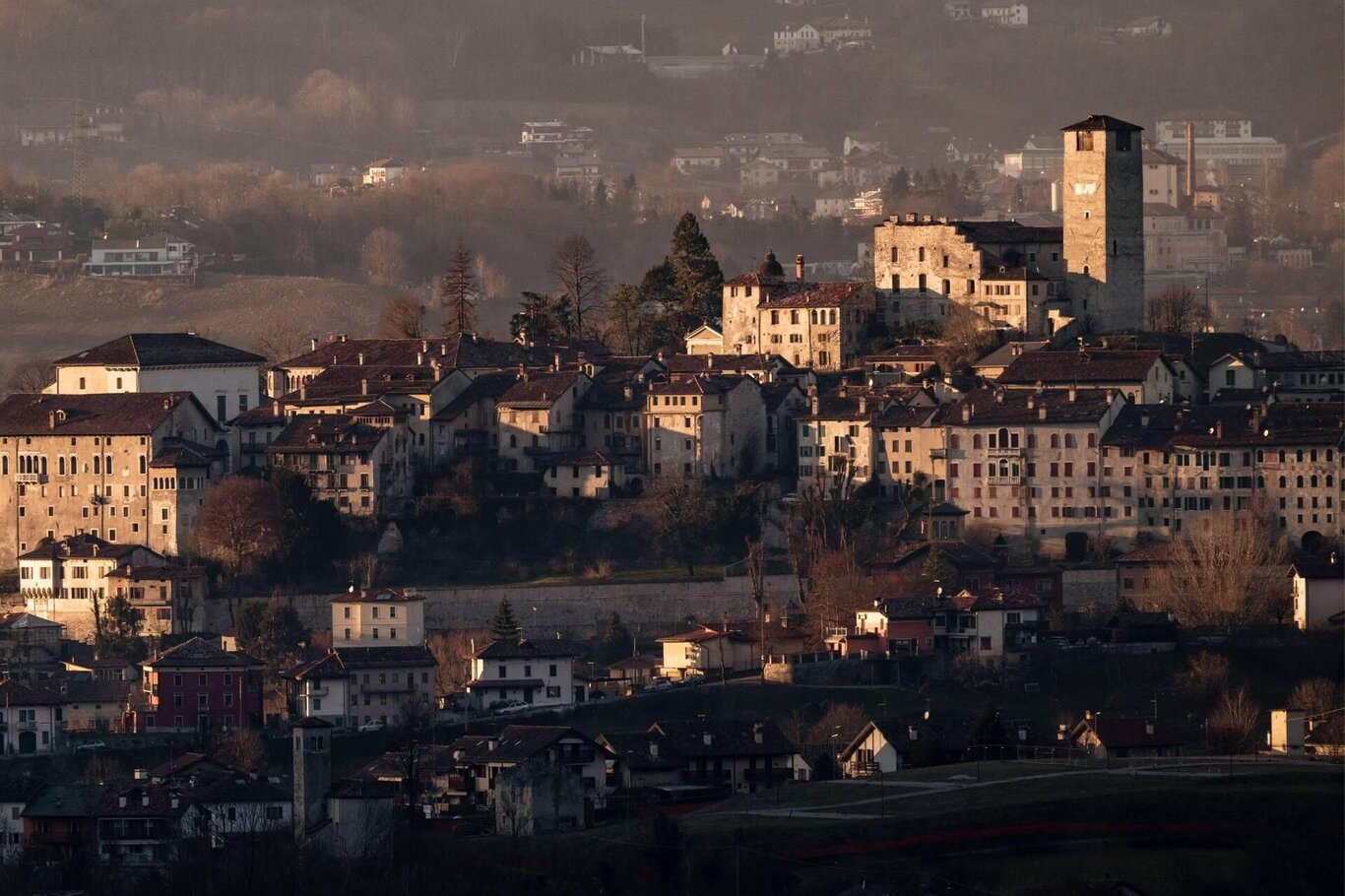The Castle of Feltre, also known as the Castle of Alboino, rises on the highest point of the hill, where once stood a Roman watchtower. Built in the 12th century and linked to the figure of the Lombard king Alboino, the fortress was surrounded by mighty walls with four corner towers, a symbol of its defensive role and control over the city.
For centuries, the fortress dominated Feltre: it was the refuge of the bishops-counts and the Da Camino lords, the stronghold of the great 14th-century lordships, and a garrison of the Serenissima Republic of Venice. The castle witnessed armies, fires, and rebirths. After the 1510 fire, it briefly became the seat of the Community Council and was enriched with frescoes that transformed it from a mere fortress into a palace of representation.
The Campanon, with its powerful chimes, marked through the centuries the civil and economic rhythms of the city, while the carved and painted symbols on its façades tell the long history of Feltre: the city’s coat of arms, the Lion of Saint Mark, and traces of Venetian rule.
Today, after careful restoration, the Castle of Feltre opens its doors to visitors, who can admire the surviving towers and breathe the atmosphere of a place that intertwined political, artistic, and civic events. A historic heritage that continues to tell the identity of the city and its community.
